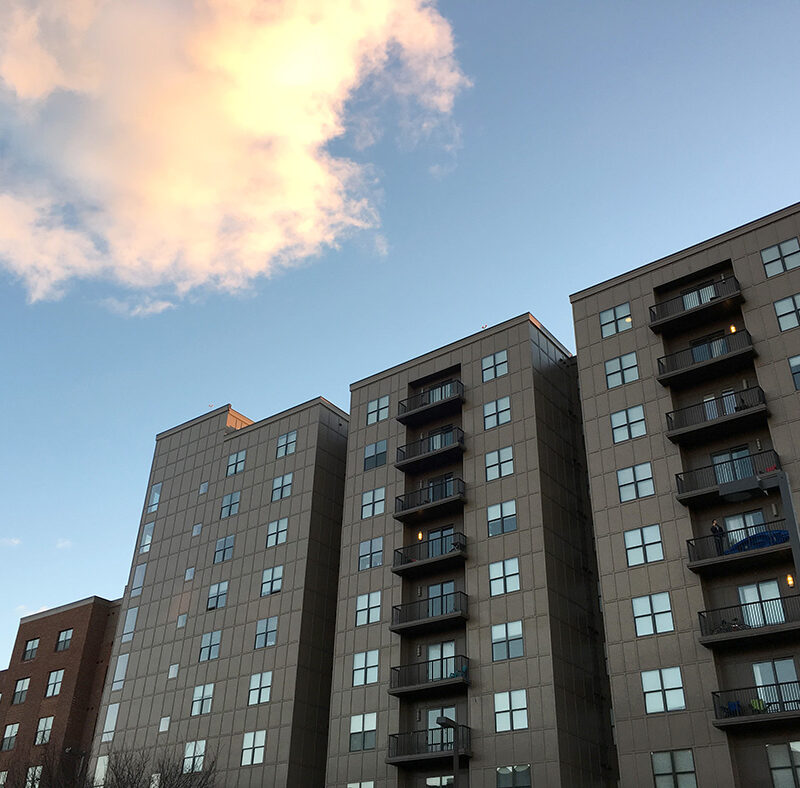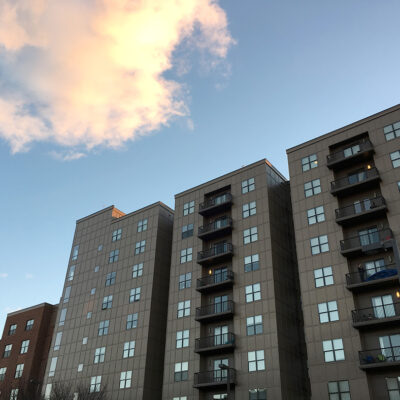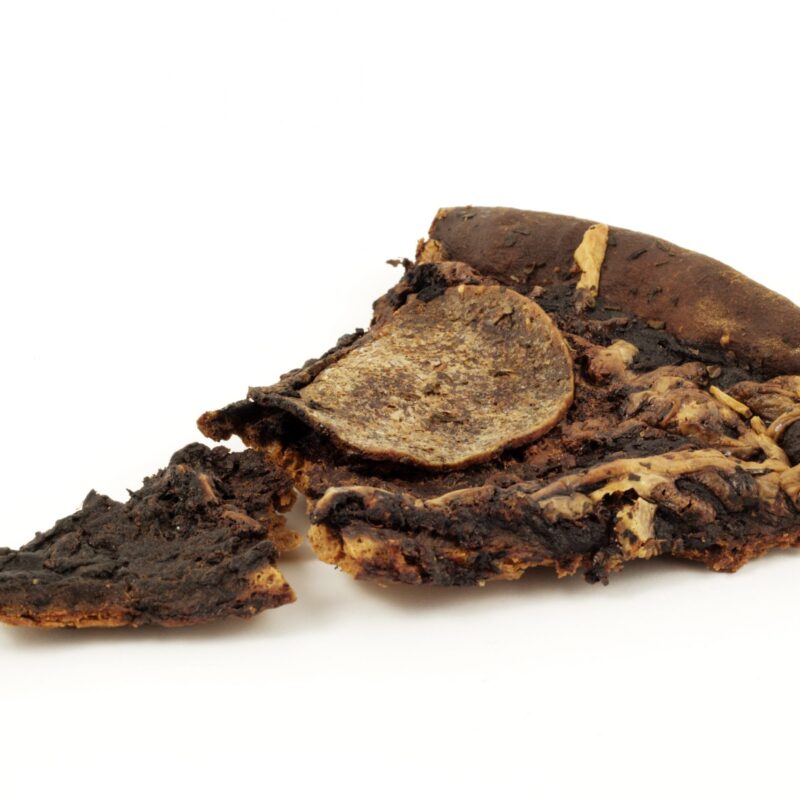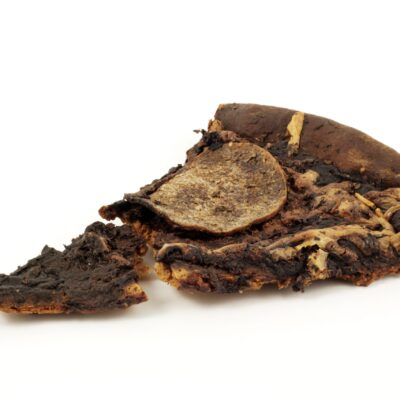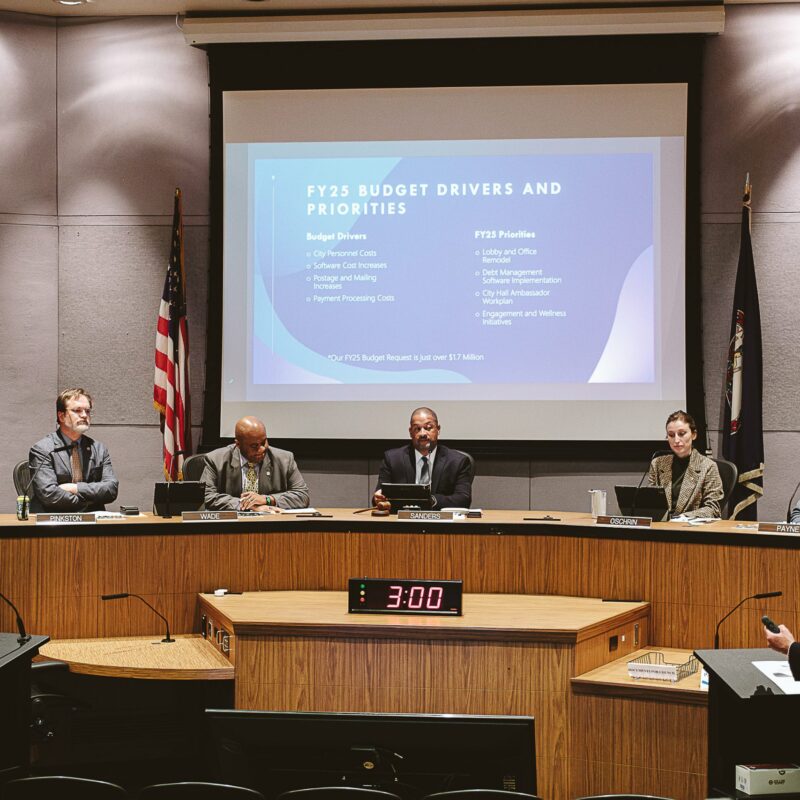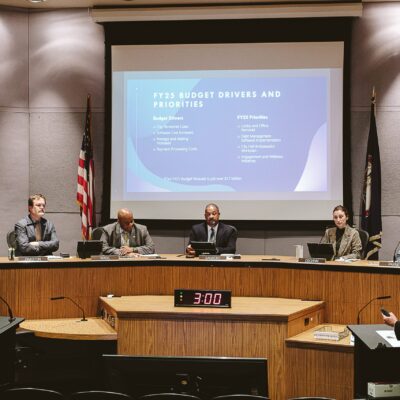|
The Rivanna Solid Waste Authority held Household Hazardous Waste collection on April 14 at the Ivy Materials Utilization Center, collecting hundreds of pounds of material over five hours. (Photo by Carissa Dezort) |
“National good, I submit, should overcome personal convenience.”
That’s a line from the April 8 “Sunday Dialogue” in The New York Times. The dialogue began with a letter from Charlottesville author and researcher Randy Salzman; readers reacted, then Salzman responded. The topic? Getting Americans to give up driving—or at least cut down on it.
One reader from Arizona had asked a pointed question. “Mr. Salzman, have you ever waited for the bus when it’s 110 degrees in the shade?” Hence Salzman’s response about “personal convenience.”
The idea of an easier or “better” daily life for individuals often functions as a kind of trump card for those disinclined to environmentalism. I admire Salzman for rebutting it as he did. Constant comfort isn’t a human right, not if it comes at the expense of the natural systems that make life possible in the first place—not to mention political stability.
But it’s hard to make a crowd-pleasing argument out of the notion of sacrifice. Inevitably, it sounds preachy, and it won’t win
sympathy except from the choir.
I re-hung my clothesline this week after it had been down for a year during a construction project. With the first load drying in the breeze, I was reminded how surprisingly pleasant it is to hang laundry outside. My life was certainly better on that day than if I’d thrown the stuff in the dryer—though it was also less convenient.
Can we, as a culture, rediscover the pleasures of less technological living, which incidentally benefit the planet and our health? Can we get to a point where we’re also willing to be uncomfortable for those causes?—Erika Howsare
Life’s more fun on a bike
When I leave home, it is generally with my bike loaded down. This often includes: fiddle for busking, lunch/snacks, water, an extra shirt, book, and possibly some gardening tools. Thus set up for the day, and heading out the driveway, I’ll often encounter my two immediate neighbors puttering in the yard or garden. Turning onto the next street, there’s another friend and neighbor. He drives a scooter around town so we often cross paths. A couple summers ago he loaned us his weedwacker in exchange for some of our peppers. Another smile and wave.
And so it goes, all the way to Big Ridge Street, where I turn down and wait at the Cherry/Elliott intersection. Most of the way down (little) Ridge Street, the same folks are out on their porches and we exchange our customary greetings—a wave, “How you doin’?” “A’right now?” (the latter an affirmative greeting). I love seeing the familiar faces on my route—it feels like I’m home as soon as I turn off Big Ridge Street.
There’s a stark difference as soon as I hit the Downtown area—people are dressed nicely, generally carrying coffee, rarely say hello, and look purposeful. I whiz by them down the hill. Or, if I’m heading to Alexander House, there’s that last bit of hill on Monticello Avenue heading towards Avon. This is usually a prime opportunity to surprise car drivers with a smile and hello, or bob my head to their music.
I do have other favorite biker characters from around town. There is the sweet man with a leg injury who rides his motorized bicycle around and does yard work. His customary greeting is “Everything’s lovely!” And it is, as soon as he says it. There’s the guy who loads his bike down with bags, hanging off of handlebars left and right. My friend once offered him a bike trailer. He politely accepted; later she noticed that he never used it, and had stuck with his own method of bike-pack mule. I love seeing little biker families, with kids on ride-along bikes or bike seats, or just little bikes. Then there are the commuters with a briefcase and extra change of clothes.
Once, I pulled up to a light and my friend and I paused to examine my malfunctioning chain. A biker crossing from the other side was watching us. When the light changed, he came over and offered his services as bike mechanic, using his cell phone as a light as he took a look at my screwed-up chain—once again confirming my experience that life is just better from a bike!—Kassia Arbabi
Kassia Arbabi helps run Cville Foodscapes and Alexander House, and gets around town mostly by bike.
Shell game
When hundreds of central Virginians descend on Nelson County’s Devils Backbone Brewery the day before Earth Day for the second annual Blue Ridge Oyster Festival, they’ll be doing more than slurping down tasty Virginia shellfish.
The piles of discarded oyster shells left over from Saturday’s feast will be returned to estuary waters in a recycling effort that the Chesapeake Bay Foundation says helps shore up still-struggling oyster populations.
Tommy Leggett, the CBF’s oyster restoration and fisheries scientist and an aquaculture farmer, said Virginia’s oysters need the help.
Early New World settlers wrote of vast beds of Chesapeake shellfish, with individual oysters so big they needed cutting up before they could be eaten. But Virginia’s oyster population started taking major hits in the mid- to late-1800s, when demand for them led to bigger and bigger harvests. Fishermen weren’t just taking oysters; they were taking their shells, too, said Leggett, and that was a problem because oyster spawn need a shell substrate to grab onto in order to grow.
Without a steady supply of shells going back into the bay, the depleted oyster population had no way to bounce back. The mining of the reefs for old shells, used in a variety of industries, didn’t help. Then came rounds of different diseases and ever-poorer water quality in the bay in the 20th century.
“That was the nail in the coffin for our oysters,” said Leggett.
Since the ’80s, though, some radical management methods have helped boost populations once again, he said, and today, the bay can support harvests of about 230,000 bushels of oysters a year, up from a rock-bottom low of 25,000 30 years ago.
More than half those oysters are farmed, Leggett said. Oyster aquaculture consists of growing the hatchery-bred shellfish in cages on discarded shells. The filter feeders do their small part to help clean up the bay, he said, and harvesting them doesn’t impact the overall ecosystem or wreck oyster reefs.
“It’s sustainable and ecologically friendly, and it’s a local product grown here in the Chesapeake Bay,” said Leggett. “For Charlottesville seafood, you can’t get much more local than Mobjack Bay oysters.”
Getting farmed shellfish from Ware Neck’s Ward Oyster Company in front of a hungry crowd at the Oyster Festival is great exposure for the industry, he said, and also for the Chesapeake Bay Foundation’s Save Oyster Shells program, which encourages people to drop shells off at one of four locations around the state for use in restoration projects.
CBF and state officials hope that after seeing shells saved from the landfill and set aside for a second life as baby oyster habitat, festival-goers will take home the lesson that as consumers, they’re part of the shellfish lifecycle.
“We want to put the shells back in the bay where they belong,” Leggett said. “That’s one of the main aspects of this festival.”—Graelyn Brashear
/IMG_1058.jpg)
